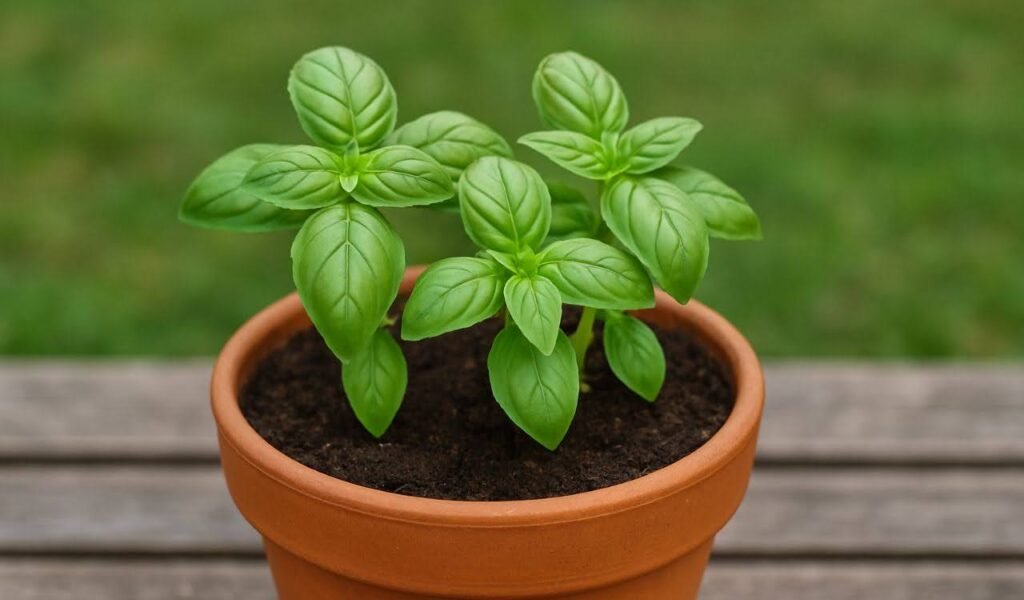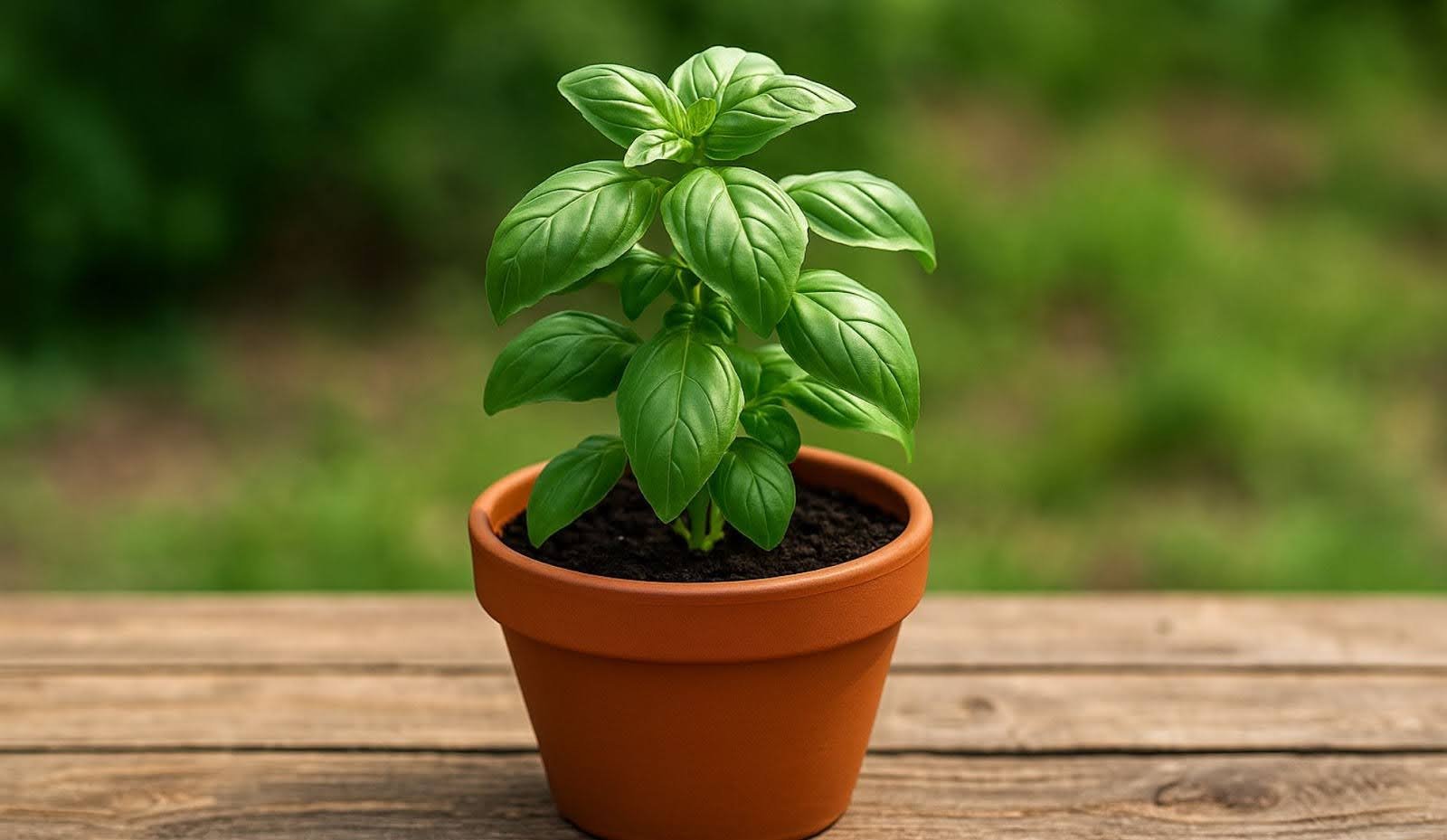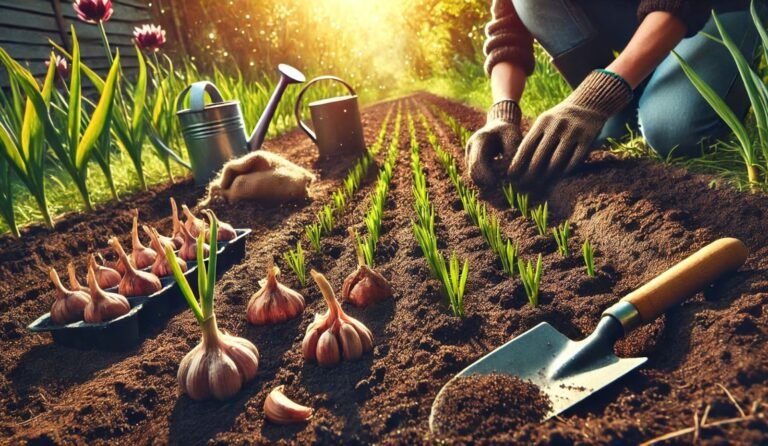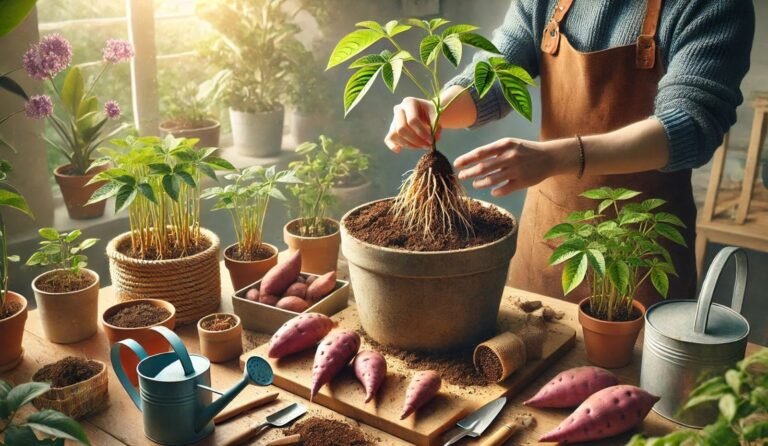How Many Basil Plant Should Be in One Pot for Best Growth?
How many basil plant should be in one pot? It sounds like a tiny detail, but trust me, it can make or break your basil-growing dreams. Plant too many together and they’ll suffocate each other before you ever get a decent harvest. Space them right, though, and you’ll have a lush, thriving bunch ready to flavor every pasta, pizza, and salad you make.
Most people don’t realize that basil isn’t just “plant and forget” — it actually needs a little planning to hit that sweet spot. So before you start stuffing seeds into every pot you can find, let’s slow down and get it right.
In this guide, I’ll show you exactly how many basil plants should share a pot (spoiler: it’s fewer than you think) and how to set them up for serious growth. If you want big, leafy, kitchen-ready basil without the struggle, you’re in the right place. Let’s get your basil game strong!
Why Growing Basil in Pots Is a Brilliant Idea
Basil, known scientifically as Ocimum basilicum, is a tender annual herb that’s incredibly easy to grow, especially in containers. Planting basil in pots gives you a ton of control over its environment — from soil quality to water drainage — and it makes harvesting super convenient.
Potted basil can be moved indoors when the weather turns cool, allowing you to extend your growing season much longer than you could with garden-grown plants. Plus, it’s easier to spot and treat any pests when your basil is right at your fingertips. Another advantage is space.
Even if you live in a tiny apartment or have just a little corner on your deck, a single pot of basil can supply you with fresh herbs for months. But before you start tossing seeds into every pot you own, it’s important to understand how basil behaves — and how much space it really needs to grow well.
Important Factors to Consider Before Planting Basil in a Pot
It might seem simple to throw a handful of basil seeds into a pot and hope for the best, but successful basil growing demands a little bit more planning.
First off, pot size matters — a lot. A small pot will limit how large your basil can grow, and it will also dry out faster, making watering a constant chore. Larger pots give the roots room to spread out and absorb water and nutrients at a steadier rate.
Plant spacing is another crucial factor. Basil plants like some breathing room. When crowded, they’ll fight for nutrients and water, often leading to smaller leaves, thinner stems, and a greater risk of diseases like mildew.
The growth habit of basil also plays a role. Basil isn’t a vining plant like tomatoes or peas; it grows upright and bushy when properly pruned. This means that, while you can fit more than one plant in a pot, they still need to have their own personal space to become full and lush.
And don’t forget about the growing conditions. If you’re growing basil outdoors, your plants will experience natural air circulation and sunlight variations that indoor plants won’t. Indoors, you’ll need to pay closer attention to lighting, humidity, and airflow, which can all impact how many plants a single pot can realistically support.
How Many Basil Plant Should Be in One Pot?

The honest answer is: it depends on the size of your pot.
So, how many basil plant should be in one pot? If you’re working with a small pot, say around six inches in diameter, stick to one single basil plant. It might seem a little lonely at first, but trust me — that one plant will soon bush out and fill the entire pot if you take good care of it. A six-inch pot simply doesn’t have the space or soil resources to keep multiple basil plants happy.
When you upgrade to a medium-sized pot, around 10 to 12 inches across, you can comfortably fit two to three basil plants. This size allows each plant to develop a strong, healthy root system without stepping on each other’s toes, so to speak. With a medium pot, you’ll get a nice, full look — almost like a little basil bouquet. If you’re lucky enough to have a large pot, 14 to 18 inches wide, you can squeeze in three to four basil plants without any problem.
Some experienced gardeners even manage five in a large, deep pot — but that’s usually only if they’re diligent about pruning and managing the plants carefully. A good rule of thumb is to space each basil plant about six to eight inches apart.
Think about how basil grows — it doesn’t vine or creep across the soil like strawberries. Instead, it shoots upwards and outwards, forming a bushy little shrub when it’s happy. Give it the space it needs, and it will reward you with a bounty of tender, flavorful leaves.
The Real Secrets to Happy Basil in Pots
Healthy basil starts from the ground up — literally.
The first thing you need is good soil. Basil absolutely thrives in a rich, well-draining mix. Look for potting soil labeled for vegetables or herbs — something that holds moisture but still feels light and fluffy.
You also need to make sure your pot has excellent drainage. Waterlogged soil is basil’s worst enemy. Always pick pots with drainage holes at the bottom, and consider placing a layer of small stones or broken pottery inside before adding soil to help with flow.
Sunlight is non-negotiable. Basil is a full-sun plant. It wants at least six to eight hours of direct sunlight every day. Indoors, a south-facing window is best, but if that’s not an option, consider getting an inexpensive LED grow light. Your basil will thank you.
Watering is all about consistency. Basil doesn’t like to dry out completely, but it also doesn’t like soggy feet. Check the soil by sticking your finger an inch deep. If it feels dry, water deeply. If it still feels damp, wait another day.
And don’t forget about feeding your basil. A light dose of organic fertilizer every four to six weeks keeps the plants vigorous and productive. Liquid fish emulsion or seaweed fertilizer works wonders (and yes, it’s a little stinky — but basil doesn’t mind).
Finally, if you want big, bushy plants, pinch your basil early and often. Once your basil has about six sets of true leaves, start pinching off the top set. This encourages branching — instead of one tall stalk, you’ll get a beautifully full, leafy basil bush.
Should I Plant a Lot of Basils in One Pot?
Considerations for Basil Planting Density
Planting a lot of basil plants in one pot might seem efficient, but overcrowding can actually hinder their growth. Basil thrives when it has space for its roots to spread and proper air circulation around its leaves.
Too many plants in a single pot can lead to competition for nutrients, water, and sunlight, ultimately resulting in stunted growth and a higher risk of disease due to humidity buildup. For the best results, it’s recommended to plant one or two basil plants per medium-sized pot (about 10-12 inches in diameter) to ensure each plant has enough room to grow strong and healthy.
Mistakes to Avoid When Growing Basil in Pots
Even though basil is relatively easygoing, a few common mistakes can lead to frustration and disappointing harvests.
One of the biggest pitfalls is overcrowding. It’s so tempting to pack a few extra seedlings into the pot because they look so small at first. But basil grows faster than you think, and before long, the pot will look like a battle zone. Trust the spacing rules, even if it feels like you’re leaving too much open soil at first.
Watering mistakes are another common problem. Too much water can suffocate the roots and invite fungal diseases, while too little water stresses the plant and causes the leaves to wilt or curl. If you want to stay on top of it, check the soil moisture daily, especially during hot weather.
Using the wrong soil can also hold your basil back. Garden dirt or cheap potting mix might be convenient, but they usually compact too much and don’t drain well. A good quality, loose potting mix designed for herbs or vegetables makes a huge difference.
Letting basil flowers too early is another mistake many new growers make. Once basil starts flowering, it redirects its energy into seed production and the leaves often turn bitter. Stay vigilant and pinch off any flower buds you see forming to keep the leaves sweet and tender.
Ignoring pests is a final but important mistake. Even in pots, basil can attract aphids, whiteflies, and spider mites. Check the underside of leaves regularly and, if you see tiny bugs, treat them right away with a gentle soap-and-water spray.
FAQ
How many basil plant should be in one pot?
One basil plant for a small pot, two to three for a medium pot, and three to four for a large pot.
What happens if I plant too many basil plants in one pot?
Overcrowded basil plants compete for light, water, and nutrients, leading to weak, spindly growth and poor harvests.
How far apart should basil plants be spaced in a pot?
Each basil plant should have about six to eight inches of space around it for healthy growth.
Can basil grow indoors in pots?
Yes! Basil grows very well indoors with enough sunlight or a good quality grow light.
What size pot is best for growing basil?
A pot that’s at least 6 inches wide for one plant or 10–12 inches wide for multiple plants is ideal.
How often should I water basil in a pot?
Water when the top inch of soil feels dry, keeping the soil moist but never soggy.
Should I plant a lot of basils in one pot?
No, you should not plant a lot of basils in one pot, as overcrowding limits growth and increases disease risk.
Final Thoughts
Planting basil in pots is one of the most rewarding things you can do as a home gardener. But How many basil plant should be in one pot? Whether you’re tucking a few pots onto your balcony, lining them up on a sunny windowsill, or creating a lush green corner in your backyard, basil rewards you quickly with fragrant, flavorful leaves you can use every day.
Remember: one basil plant per small pot, two to three in a medium pot, and three to four in a large pot is the sweet spot. Give them room, love, and sunlight, and they’ll repay you with more fresh leaves than you know what to do with. And the best part? Every time you snip a few leaves for your pasta or homemade pesto, you’re encouraging even more growth. It’s a win-win for you and your plants. Happy planting — and happy eating!







